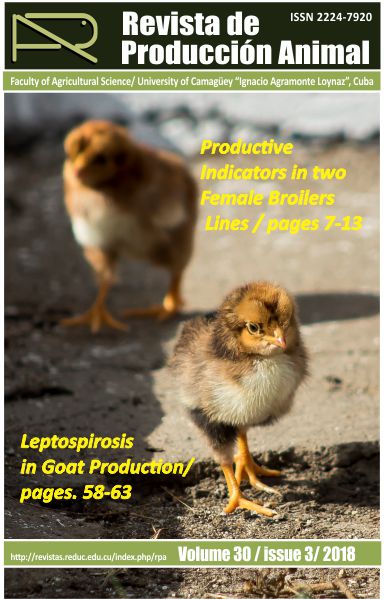Animal Response and Economic Impact of Tree Inclusion in a Livestock System
Resumen
A study was conducted at the Roberto Rodríguez CCS (Credit and Services Cooperative), in the municipality of Sierra de Cubitas, province of Camagüey, Cuba, to evaluate the animal response and economic impact of the inclusion of trees in a livestock system under the local edaphoclimatic conditions. The productive performance of animals and the forest system were evaluated, and their economic impact was determined. The mean and SE was determined as well. The results were compared using a T-student test for P < 0.05, in order to evaluate animal response in the two systems. The results indicated the superiority of the forest grazing system over the traditional system. It was concluded that the forest-grazing system increased animal productivity and contributed with additional benefits in terms of forestry. The forest-grazing system had a greater economic impact than the traditional system.
Descargas
Los autores de los artículos publicados en RPA retienen los derechos de autor de su trabajo, de marca y patente, y también sobre cualquier proceso o procedimiento descrito en el artículo, así como a compartir, copiar, distribuir, ejecutar y comunicar públicamente el artículo publicado en la RPA o cualquier parte de aquel siempre que indiquen la fuente de publicación (autores del trabajo, revista, volumen, número y fecha), pero están de acuerdo en que la revista publique los trabajos bajo una licencia Creative Commons.
![]() Licencia Attribution-NonCommercial 4.0 International (CC BY-NC 4.0)
Licencia Attribution-NonCommercial 4.0 International (CC BY-NC 4.0)






































